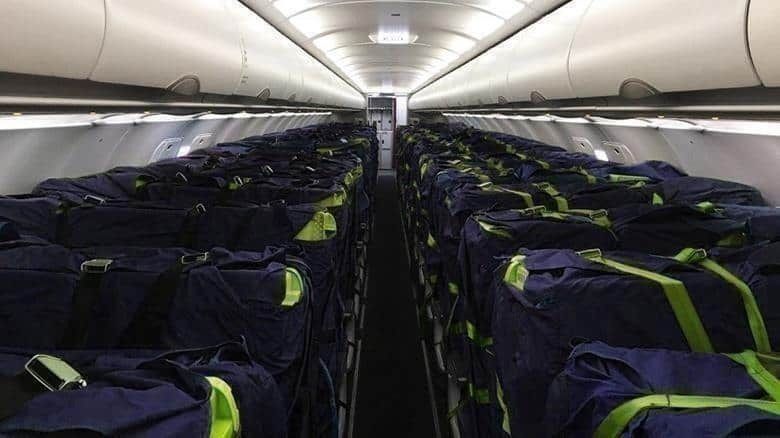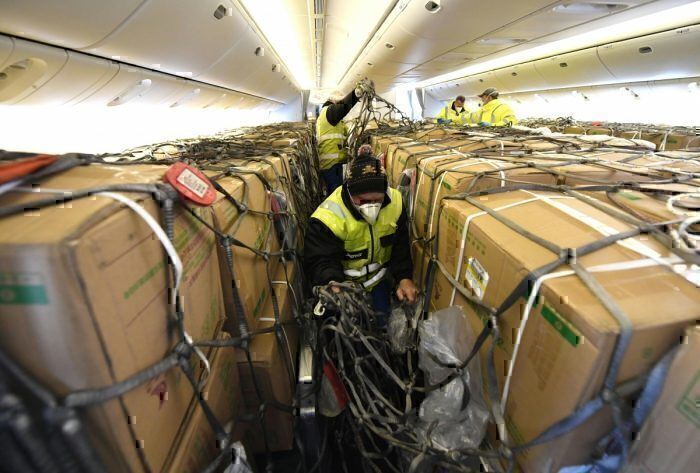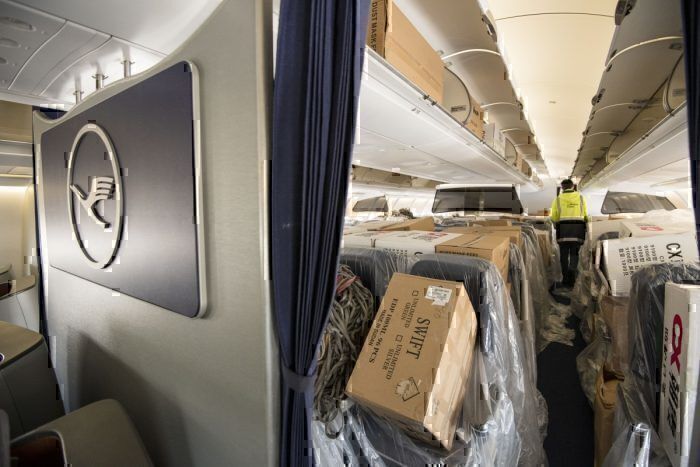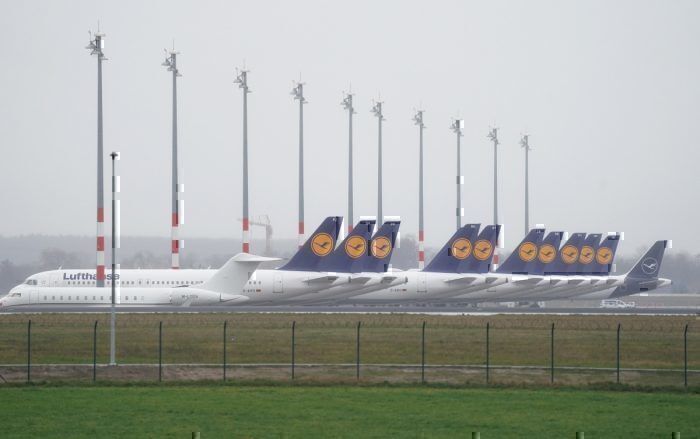Parts supplier Colibri Aero and design firm J&C Aero have developed a new way to transport cargo on narrowbody passenger planes. The cargo seat bag is designed to maximize available cargo space on a passenger configured A320 family aircraft, whilst also keeping the goods safe and secure. Thanks to rapid certification by EASA, airlines will be able to start making use of the kit immediately.
Turning passenger planes into cargo haulers
The outbreak of coronavirus worldwide has led to airlines slashing flight schedules and grounding thousands of aircraft, as travel demand bottoms out and nations close borders in an attempt to control the pandemic. With no other way to earn revenue, airlines are increasingly turning to operating cargo-only flights as a means to generate a little income.
While passenger planes often carry a portion of cargo in the belly, simply filling the hold with cargo would not be enough to make these flights possible. As such, we’ve seen a number of airlines utilizing the passenger cabin to maximize the capacity for cargo.
While we’ve seen some cool pictures of boxes stacked on seats and piled high in the aisles, it’s not really the safest or most efficient means of transporting goods. However, a couple of firms have come up with a great solution and, thanks to the pressing nature of the current situation, European regulators just rushed through the certification for the product so that airlines can start benefitting right away.
The A320 cargo seat bag
Developed by a partnership between Colibri Aero and J&C Aero, the cargo seat bag is a custom-designed interior modification created for use on the popular Airbus A320 family of narrowbody aircraft. Designed to be used for both humanitarian supply transport and commercial cargo, the bag fits neatly onto the seats, giving airlines a rapidly deployed solution to converting passenger planes to cargo movers.
The kit for a triple seat gives airlines a spacious 76x76x147 cm (30x30x58 inches) of cargo capacity, allowing for up to 75 kg (165 lb) of cargo to be carried on top of the seat. Another 9 kg (20 lb) can also be carried underneath the seat, giving the airlines up to 252 kg (555 lb) of cargo capacity per three-seat block.
The kit can be installed in just a few minutes, allowing airlines to make the most efficient and safe use of the space, without costly modifications to the cabin. Laurynas Skukauskas, the Chief Commercial Officer at J&C Aero told Aviation Pros about the development of the bags, saying,
“We started the development of the modification back in 2019, with numerous testing and continuous consultations with both aviation authorities and airlines along the way. In February 2020, amidst the growing concerns over what now is known as the COVID-19 pandemic, we decided to put additional resources to the project in order to have a certified modification as soon as possible.
“We are thankful to our team and European aviation authorities whose close cooperation will allow us to deliver the modification to the market at a time of need.”
Supplemental Type Certificate awarded
The newly developed modification kit has received approval from the European Aviation Safety Agency (EASA) and has been awarded the required Supplemental Type Certificate to enable rapid deployment of the bags. EASA pushed through accelerated approval of the modification, to allow passenger airlines to begin shifting much-needed cargo around the world as soon as possible.
Andrius Norkevičius, the CEO of Colibri Aero further told Aviation Pros that,
“Being able to promptly apply temporary modifications for passenger cabins for cargo purposes may allow aircraft operators to increase cargo capacities thus adapting operations to the growing demand for cargo air deliveries between countries and regions.”
The kit can be used on all variants of the A320 family, from the tiny A318 ‘baby bus’ to the stretched A321. According to Wikipedia, there are just short of 8,000 such aircraft in service right now, many of which are parked up with no passenger flights scheduled. The rapid deployment of these cargo bags will make it easier than ever for airlines to put their Airbuses to good use supplying the world with the goods it needs.




